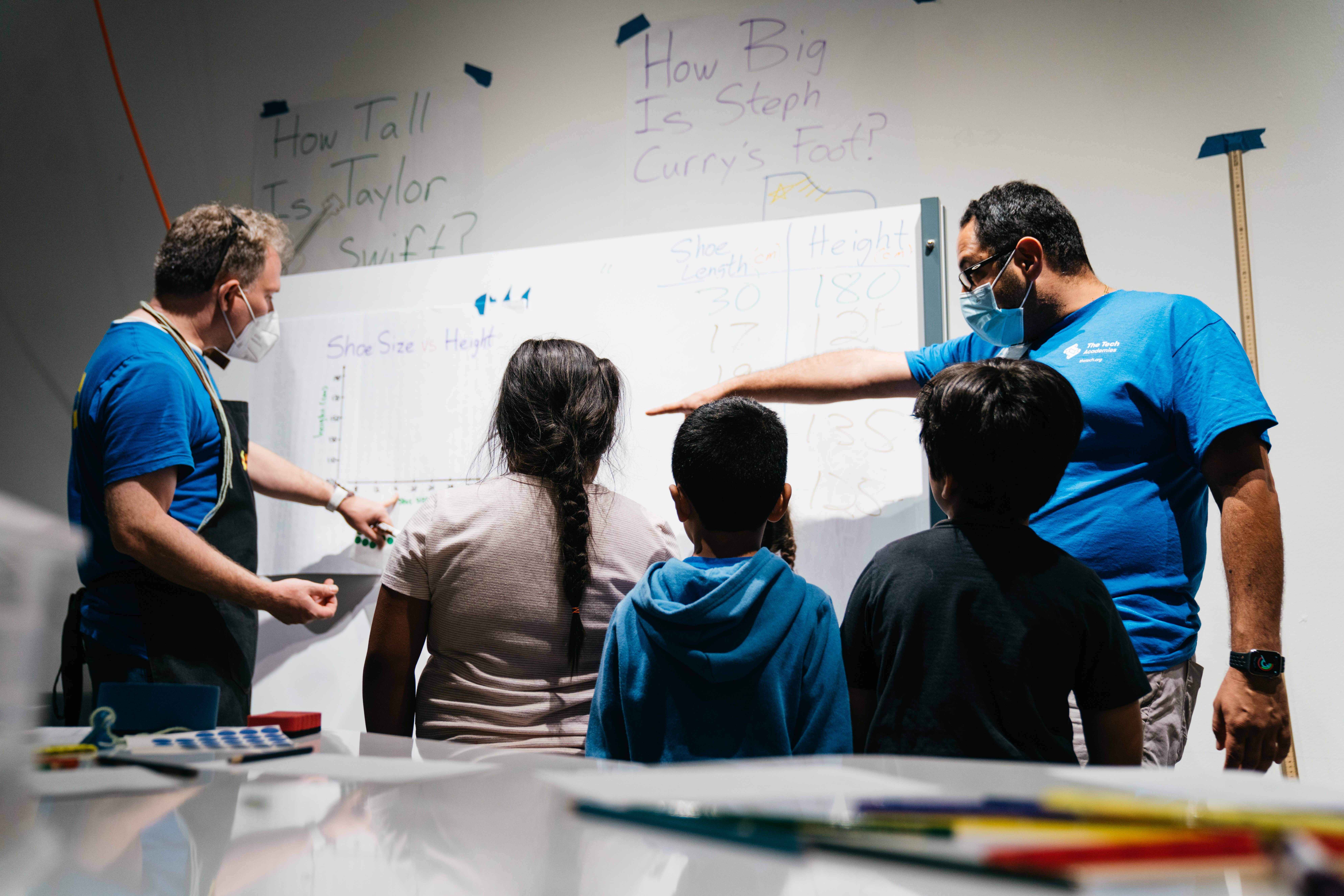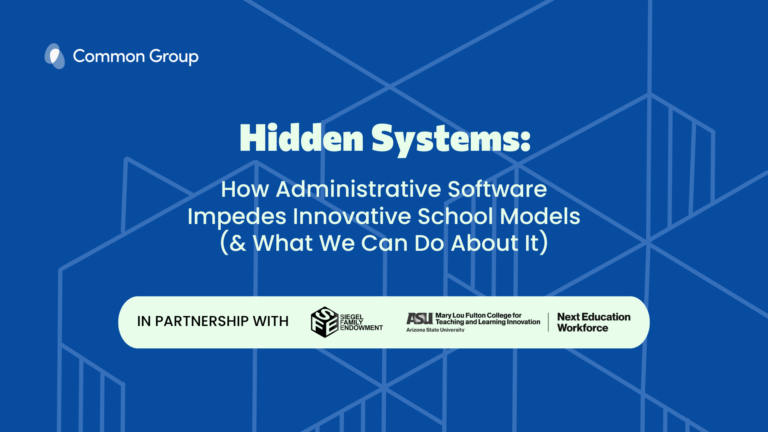
How The Tech Interactive in San Jose is Bringing Computational Thinking and Data Science Into Its Exhibits, Programs, and Teacher Support
The Tech Interactive, a science center in San Jose, California, puts one of its core principles in its name: STEM education should be interactive, engaging, and joyful. Through exhibits, workshops, professional learning opportunities for educators, curricula, and engineering challenge programs, The Tech aims to inspire the innovator in everyone, allowing all students the opportunity to see themselves as capable scientists, engineers, and innovators.
As is fitting for a Silicon Valley-based institution, computer science education has always occupied a prominent place at The Tech. But the addition of data science and computational thinking concepts into exhibits and programming is more recent and is still ongoing. Siegel Family Endowment is supporting this work. In this interview, we spoke with Esmeralda Tovar, the Computer Science Education Manager at The Tech Interactive to find out more about how The Tech is conceptualizing computational thinking (CT) and data science (DS), why it’s important that they be a piece of computer science education, and what we might expect to see around CT and DS at The Tech in the future.
The Tech Interactive has a different vision of what a museum can be—a physical space that is used by visitors to collaborate and create. Can you share a little bit more about the model of The Tech and what you’re trying to accomplish?
It’s our mission to inspire the innovator in everyone. We like to spark curiosity through our exhibits. We also support educators, caregivers, and youth to build problem solving skills and encourage and support youth in pursuing STEM careers through our partnerships and all of our programs.
We have the physical building right in downtown San Jose, but we’re more than just a building. We have field trips where students and teachers are able to partake in labs, engage in engineering, and explore the exhibits. They’re exposed to many different technologies and different careers through the exhibits that we have.
We also have the Tech Challenge, which invites teams of students in Grades 4-12 to use the engineering design process to solve a real-world problem. They’re creating, they’re iterating, they’re prototyping, they’re building up to a showcase of their solution over the course of an academic year.
We have lots of different programs for educators. Everything from free, online resources to the more intensive Tech Academies program, which is a fellowship offered to teachers from ten surrounding school districts to learn how to design hands-on engineering and computational thinking lessons, and then bring that back to their students in an integrated way across the curriculum.
You’re serving a lot of different groups, including educators, caregivers, and youth. How does a program like Tech Academies provide an opportunity for you to reach those groups in different ways than might otherwise be possible?
We specifically want to focus on reaching those groups that are underrepresented in STEM. Most of our partner districts for Tech Academies serve a large population of underrepresented youth. We can reach those students by working with their educators.
We find that in many cases, students, caregivers, and teachers don’t know what careers are possible. By having exposure to the different types of careers, students can then make an informed decision and understand that they are not limited to certain careers.
Another benefit of this work is building a diverse workforce and having that workforce be representative of the communities that students are living in. For example, The Tech is in downtown San Jose. It’s in the middle of Silicon Valley, where there’s a lot of wealth and a lot of technology. But there’s also a wealth gap. Many of our underrepresented communities live in San Jose, but they don’t have access to all of the opportunities people imagine when they hear the words “Silicon Valley.” We want to make sure that the STEM workforce and industry reflect the entire community.
What skills are you trying to build among the people that you serve at The Tech?
We want students to be problem solvers and have engineering mindsets, including perseverance. Engineering is about trying something, prototyping, seeing if it works, and if it doesn’t, then trying again. I always tell educators, and I always told my students when I was a teacher, ‘We didn’t stop at the iPhone 1.’ Can you imagine if we would have?
Curiosity is important, allowing kids to dream big. We also want them to collaborate. That’s a huge skill to be able to learn. People think that being a computer scientist is an isolating job, but it really isn’t. It’s collaborative. And empathy is important too—so having empathy for others, having empathy when it comes to creating something for someone else’s needs.
A lot of those skills are ones that you aim to build through your computer science programming. You’re also working on ways to more explicitly build computational thinking (CT) and data science (DS) into The Tech’s programs, exhibits, and educator resources around computer science. What do CT and DS mean to you?
For us, computational thinking is a problem solving process that can be applied anywhere. We specifically focus on four skill areas of algorithms, abstraction, decomposition, and patterns.
A quick example is that in English Language Arts, you might use decomposition to break down your main points to write an essay. But you might also use that process to determine how to go grocery shopping. If you have to go to multiple stores, you have to figure out how that happens. The way that we’re teaching computational thinking is not just around content, but also in its application to everyday life.
Data science is a newer field that we’re exploring. Currently, the way we’re understanding data science as involving humans and computers to collect, process, analyze, and utilize data to understand and solve problems.
How do CT and DS fit in with your current programming, especially around computer science?
Focusing on CT allows us to reach a broader group of educators and get them started with computer science. But also having that explicit connection to coding is very, very important. In our CT resources, we have “plugged” activities (which are done on a computer) and “unplugged” activities (which are done offline). We tell people, ‘You can start with unplugged. That’s fine.’ But the hope would be that when you move on to the plugged component that those two are tightly connected and that you are continuously reinforcing CT throughout plugged and unplugged activities. That makes coding and programming easier.
What is the process that you’re going through as you work to integrate CT and DS more explicitly into The Tech’s programs, resources, and exhibits?
We want to make sure that we are engaging everyone. That’s one of the challenges, but also, unique opportunities—to actually create something in order to build those skills that we discussed, and bring awareness to CT and DS.
When we incorporate CT and DS into exhibits, we need to be explicit about the fact that you’re using CT to solve this problem, or the fact that you’re actually looking at real data to solve the problem. It’s not a fictional dataset that they’re looking at. People see patterns. We want our exhibits to spark ideas or questions which would hopefully then encourage visitors and youth to solve some of these problems, or to engage with other problems in their communities and actually solve them.
That focus on real-world problem solving is an important part of The Tech’s approach. Why is that so important for you?
It’s important because it brings equity. If students are looking at problems within their own communities, then we’re being culturally responsive to what they are going through as youth and as individuals. We’re responding to that. It’s really, really important for students to be presented with real-world problems so that they see that they can solve them. They don’t wonder, ‘Why am I learning this?’
It’s still pretty early in development, but we’re creating a set of CT and DS educator resources that are culturally responsible. The idea is to give teachers a set of resources that allows them to see the assets and all of the value that their students bring, and then use that to teach whatever the standards are. The resources will emphasize the purpose of learning and the potential for solving real-world problems.
What is the change that you’d like to see through these efforts to integrate CT and DS into the computer science education programs, exhibits, and resources at The Tech?
We want to see educators really think and realize the importance of CT and DS and see the importance of teaching those skills to their students. That provides an opportunity to expose young people to careers and skills that they otherwise may not have considered. It can offer them the ability to say, ‘I could do that. I could be a mechanical engineer if I wanted to.’ Or ‘I could really see myself as a programmer or as a data scientist.’
We want to make sure that educators have the ability and the skills to be able to teach their own students about CT and DS and computer science so that then we can have that impact on our workforce.
It’s also about breaking down some of the silos that exist between the subjects that students learn in school. We don’t just live in a math world or we don’t just live in a literary world. Everything is connected.
We’ve had social science teachers participate in the Tech Academies Program, and they’ve realized the importance of CT and implementing that and integrating that with what they’re teaching. We’ve had Spanish teachers do the same thing. We’ve had special education teachers see the importance of CT. Those teachers come to see that learning about CT provides students with an additional opportunity to learn new skills and to transfer those skills. It’s not just in computer science that they’re using CT skills. They’re using those same skills to problem solve in every class.
And it’s about showing students that learning is fun. Having fun, making sure that we always have a curious mindset, engaging in hands-on activities—that’s how we learn best. That’s how we can make an impact.
Esmeralda Tovar is Computer Science Education Manager at The Tech Interactive. In this role, Esmeralda co-created The Tech’s computational thinking model. She was formerly a high school STEM and computer science teacher.





